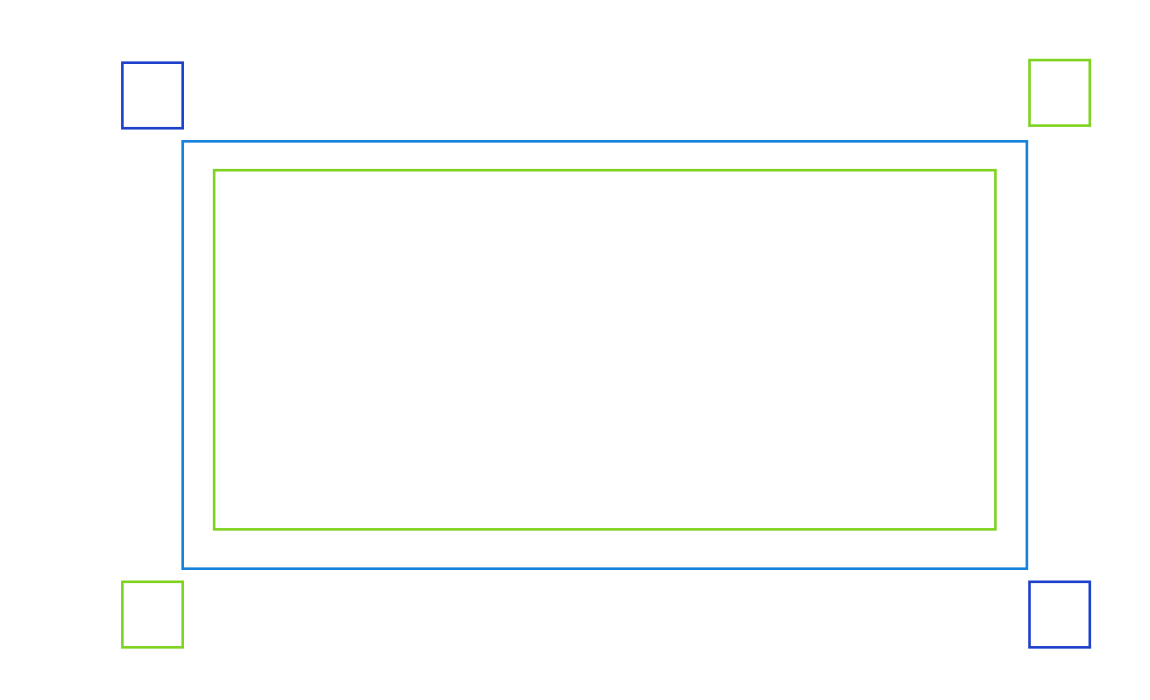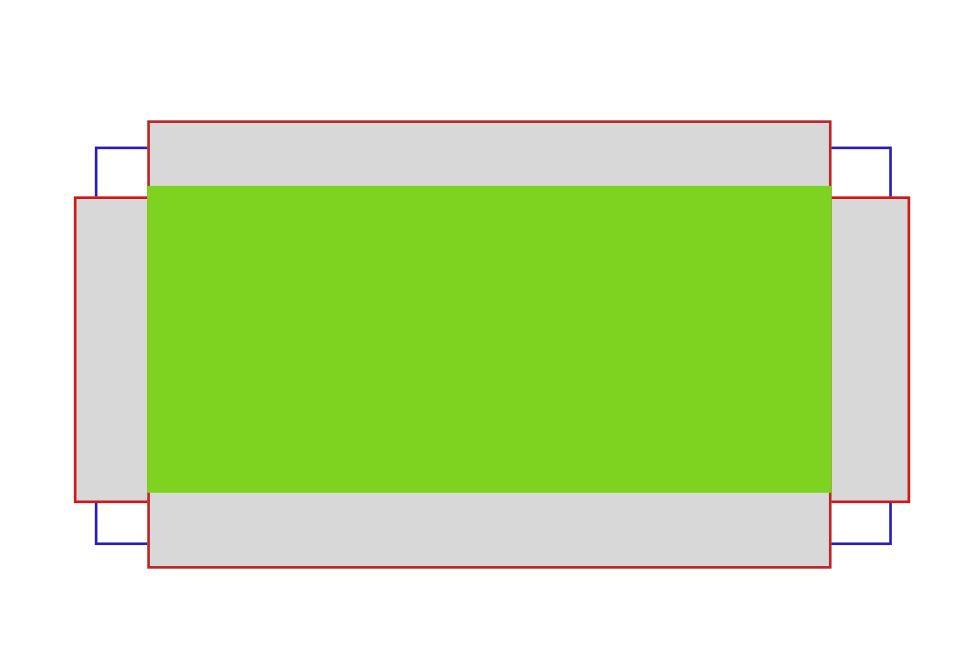使用 CSS 显示元素的四个角边框

为元素加上边框很简单,但是要单独给每个角加上边框就有点难了,下面介绍下实现该效果的两种方法,以及这两种方法优缺点的总结。
伪元素边框法
在看 CSS 代码之前,让我们先看看 html 的结构。
1 | <div class="outter"> |
这里使用了内外 2 层 div,因为单独使用 1 个 div 来实现 4 个角边框不好实现,所以要用 2 个 div,每个 div 实现 2 个角边框的效果。
咱们再来看看 CSS 代码。
1 | .outter { |
这里主要使用了伪元素来实现角边框,我们知道::before 和 ::after 这 2 个伪元素可以添加显示内容,所以我们就用::before来实现其中一个角边框,::after实现另外一个。
但每个元素的::before 和 ::after只能出现一次,所以我们需要 2 个 div 来分别实现 4 个角边框的效果。
在实现每个角边框的时候,我们可以通过绝对定位的方式来设置每个角边框的位置,比如外层 div outter的::before伪元素,我们设置其位置为top: 0; right: 0;,它的位置就是右上角。
这里要注意的是,如果内层和外层 div 不是完全重叠的话,内层伪元素的位置就要有所偏移,比如内层 div content的::before伪元素,我们设置其位置为top: -5px; left: -5px;,这是因为外层和内层 div 因为padding而偏移了5px的位置,所以这里的绝对定位就不是top: 0; left: 0;了。
效果图

优缺点
- 优点:灵活性高。
- 缺点:CSS 代码比较多,html 结构也比较复杂,需要 2 个 div 来实现。
伪元素遮盖法
我们接着来看第二种方法,还是来先看下 html 的结构,这种方法的 html 结构相对比较简单。
1 | <div class="content"> |
这里的img是我们要用角边框包括起来的内容,所以实际上我们只用到了 1 层 div。
1 | .content { |
这种方法同样是利用了伪元素,但不是用伪元素来实现边框,而是用来遮盖边框。
我们看到最外层的div设置了一个边框border: 2px solid #ca1c1e,这个就是我们最终会看到的角边框的边框,但是其中一些部分会被遮盖掉。
以::before伪元素的代码来讲解:
1 | .content::before { |
使用伪元素::before遮盖掉了上下两边框的中间部分,可以看到其宽度设置为width: calc(100% + 50px + 4px - 120px),我们来解读一下这些数字的含义。
50px是左右padding的宽度4px是border的宽度120px是最后我们想显示的角边框的总宽度,首先它必须大于50px + 4px,不然会把边框完全挡掉,这里设置成120px,那么相当于角边框的宽度就是120 - 50 - 4 = 66,所以每个角边框的宽度就是33px。
height: calc(100% + 4px): 高度就是总高度再加上border的宽度。
top: -2px: 从边框的上面开始定位,是为了把上边的边框挡住。
left: 50%;transform: translateX(-50%);: 水平居中。
z-index: 1;: 让伪元素可以挡住外层的 div。
::after伪元素原理和::before大致相同,只是把水平和垂直方向调换一下。
效果图

优缺点
- 优点:一层 div 就可以搞定,结构相对简单。
- 缺点:如果背景色需要透明的话则不适用。
总结
这就是实现元素角边框的两种方法,其实还有一种方法,就是使用 CSS 的clip-path来实现,但代码相对比较hard code,而且这个特性还是实验性的,所以具体怎么实现这里就不介绍了,感兴趣的同学可以看下这个 code pen。
如果还有其他更好的实现方法欢迎留言,大家一起学习进步,谢谢!

